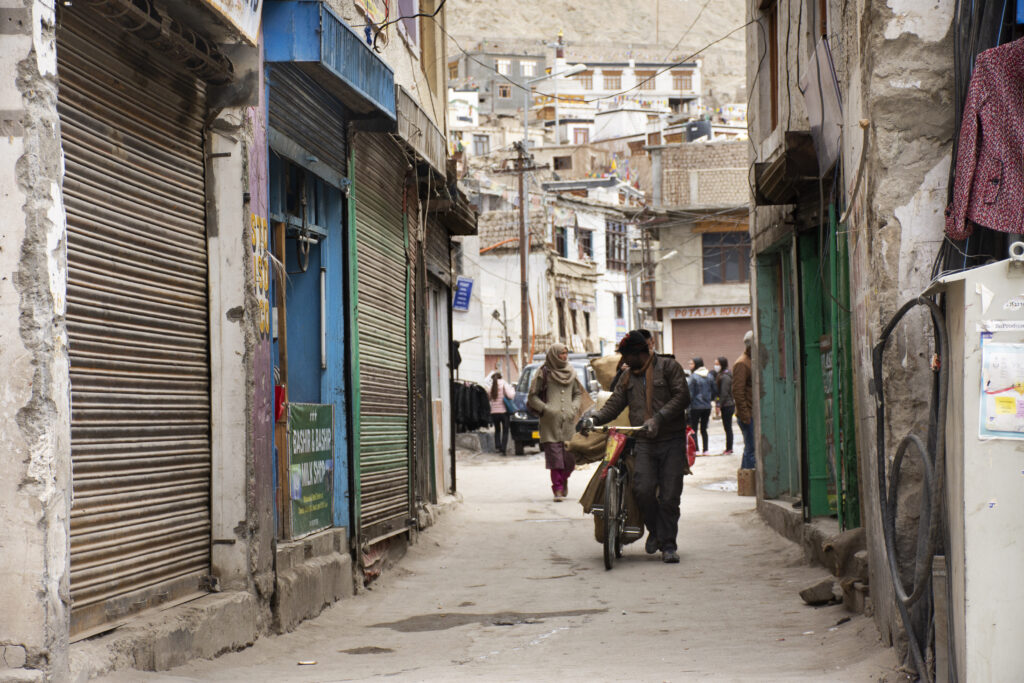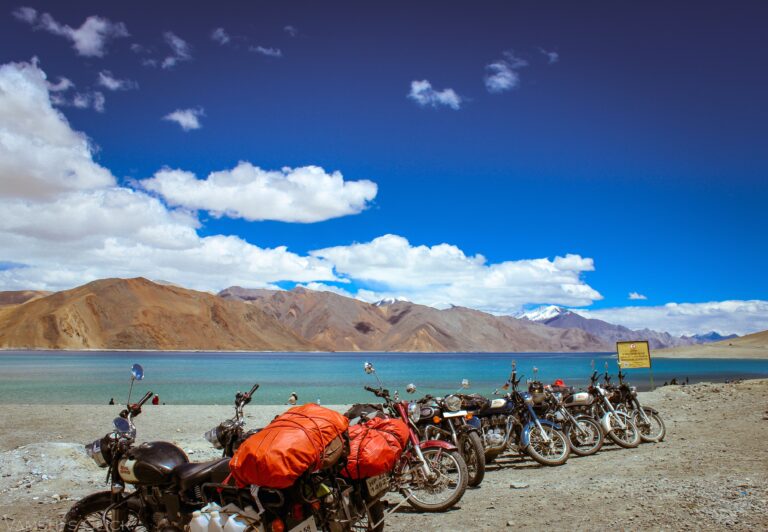
The Ladakh people of Jammu and Kashmir have Turanian (Central Asian) features. The Ladakh people in this area are happy and peaceful. Muslims make up the remaining 55% of the population, while Buddhism accounts for 45% of it.
Spend your time at our Heritage hotel in Ladakh learning about the region’s fascinating culture and unique way of Life.
Occupation of People in Ladakh

The people of Ladakh usually live a nomadic, rural lifestyle and are real and honest. 90 percent of Ladakh residents work in agriculture dependent on the Indus River for a living.
Barley, wheat, buckwheat, peas, rapeseed, and beans are some of their primary agricultural products. Low-altitude, warmer climates are best for growing apples and apricots. Ladakh is well renowned for having a vibrant culture. The people of Ladakh are extremely diligent and have made good use of the abundant natural resources.
Ladakhi people also work as sheepherders. Herders are referred to as Chang-pas in Ladakh. They tend to the long-haired sheep and goats whose underfur is used to make the renowned Kashmiri Pashmina shawls.
Chang-pas are nomadic people that live in tents and explore the countryside in search of pastures. The people of Ladakh are fervently interested in trade. Their primary profitable commodity is raw wool. Regarding their meals, the Ladakhi men travel great distances in search of affordable pricing for their goods, which include salt, dry fruits, cultured pearls, and semi-precious stones.
Regarding their meals, the Ladakhi men travel great distances in search of affordable pricing for their goods, which include salt, dry fruits, cultured pearls, and semi-precious stones. In exchange, they receive supplies like sugar, flour, tea, tobacco, and other necessities.
The most well-liked pastime in Ladakh is playing polo on swift, racing ponies. Unlike in western polo style, the pony is not replaced after each chukka or chukker; the polo player continues to play with the same pony. In Ladakh, this game is still played with antiquated wooden balls on an uneven, bumpy field.
The ibex, red bear, and state mammals of Pakistan—wild sheep, antelope, gazelle, and marmot—are hunted by foreign hunters in Ladakh. Ladakh is also rich in priceless natural resources including gold, copper, and semi-precious stones.
The Way Of Life In Ladakh
Like the land itself, the people of Ladakh have very distinct lives from those of the rest of India. The Ladakhis’ looks, bodies, and attire are more akin to those of Tibet and Central Asia than India. Dards, an Indo-Aryan race that descended from the Indus and the Gilgit region, may have made up the original population.
When the Ladakhis arrived from Tibet several millennia or more ago, the Dards’ civilization was undoubtedly weakened and their ethnic characteristics vanished as a result of their widespread migration. The most recent residents in Central and Eastern Ladakh appear to be primarily of Tibetan descent. The Ladakhis in and around Kargil, to the west, claim a mixed heritage.
The Arghons, a Muslim group in Leh that was founded as a result of marriages between native Ladakhi women and Kashmiri or Central Asian businessmen, are an exception to this simplification. They resemble the other Ladakhis culturally, but their body and appearance clearly reflect Indo-Aryan domination.
People of the Ladakh Desert

Most of the inhabitants of the Ladakh desert are farmers. Along with their practise of Buddhism, this has significantly influenced their traditions and rituals. Their social and familial structures perpetuate the values of a people who depend on the land, particularly rare land, for all of their needs, including food and shelter.
The practice of inheritance by primogeniture, “fraternal polyandry,” and the removal of the older members of the family as soon as the eldest son is old enough and capable of taking care of the family are all examples of the same.
The Ladakhi customs state that the eldest son inherits the father’s property, giving him uncontested control over the land ancestor property. The younger son cannot claim his share of the purchase, and if they want to live under his rule, they must accept his power.
The younger brother has the authority to limit the number of children his brother’s wife can have. If the brother marries a different woman, he forfeits his right to the family’s property and must make his way outside on his own. These days, only the remotest areas of the village still engage in the activity.
The sense of community among Ladakhis is also extremely strong. For instance, sowing and reaping are communal tasks to which every villager contributes, regardless of whose field is being ploughed.

